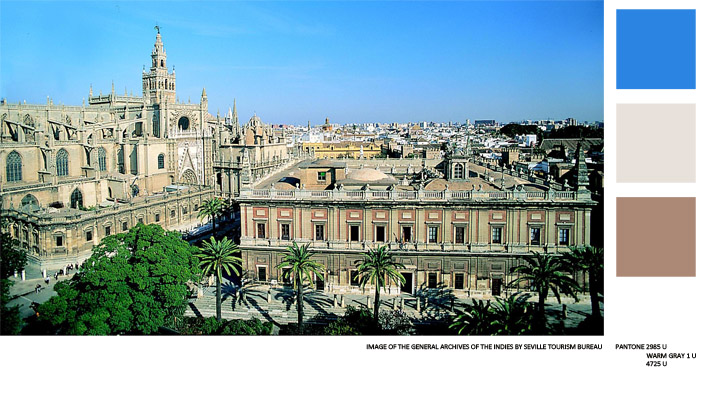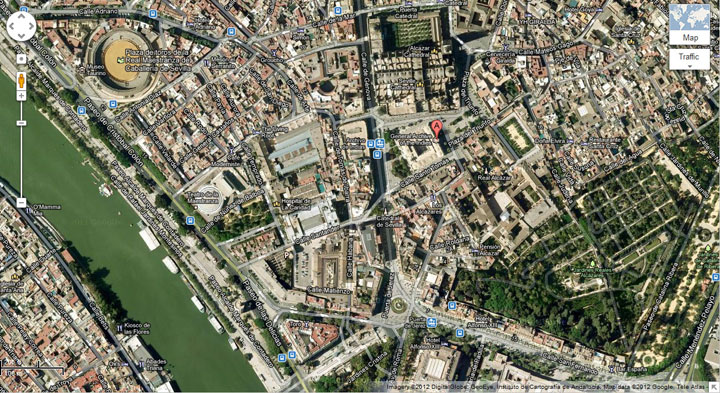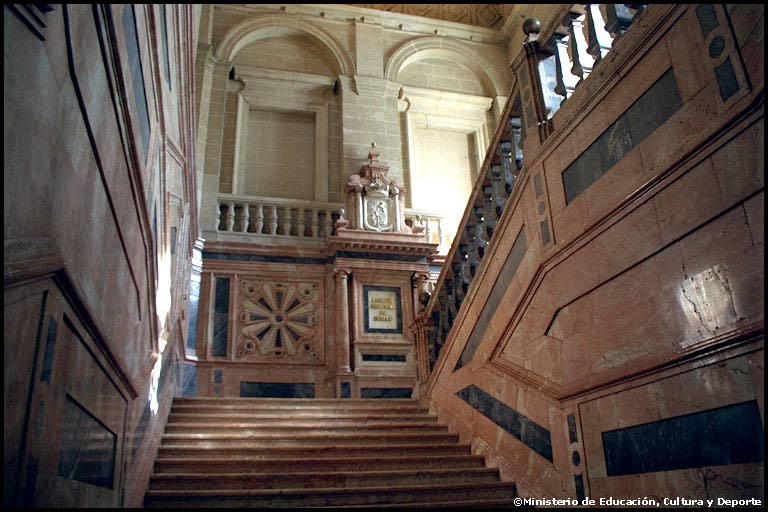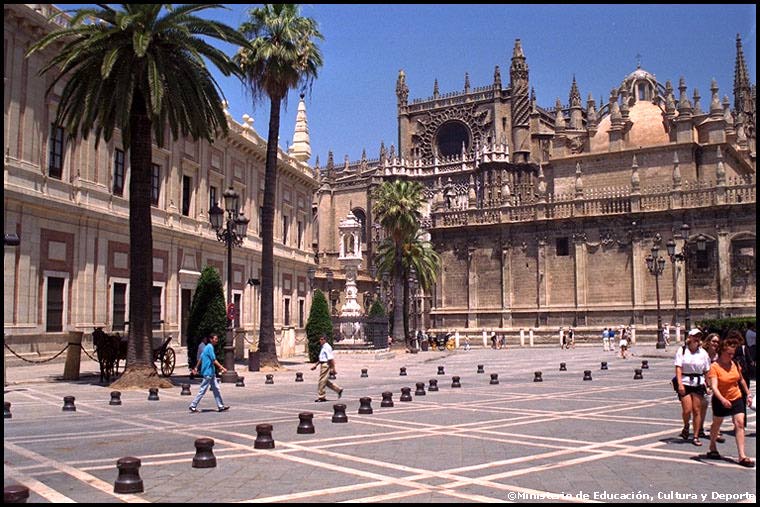
It’s almost our 500 year anniversary!
Spain had a thorough and meaningful influence on city planning on early America, although the legacy is not widely known. This legacy was a governing code of city development called the Laws of the Indies, issued formally in 1573. OK, so we’ve got a few years until that official issuance anniversary. But since the Committee on Design is visiting Seville this week, it’s a good time to visit the General Archives of the Indies and consider the influence of Spanish thought on the development of New World colonies.
Seville’s General Archive of the Indies maintains and collects documentation about those Spanish colonial campaigns. Here, the Indies are the Spanish colonies in America; there is also a collection about the Philippines. This grand building was originally designed by architect Juan de Herrara and built between 1583-1646 to consolidate and house the various marketeers and businessmen for the colonies. Later, the efforts were moved to other cities around Spain. King Charles III in 1785 returned the headquarters to Seville and set about restoring the original building which sits today in the heart of Seville and next to the Seville Cathedral. It's also near the bull fighting ring. This city's got God, bulls, and business.

The resulting magnificent structure is Italianate, with extensive vaulting and a central courtyard. In 1987, it was listed as an UNESCO World Heritage Site. The Archive has a nice website, available here:
http://www.mcu.es/archivos/CE/ExpoVisitVirtual/visitas/indias/indias.html

How important were the Laws of the Indies? Historian John Reps wrote:
Because of the relative inflexibility of Spanish colonial policy the regulations of 1573 remained virtually unchanged throughout the entire period of Spanish rule in the Western Hemisphere. Even beyond that time they influenced the plans of towns laid out in North America by the Mexican government after its separation from Spain. Literally hundreds of communities in the Western Hemisphere were planned in conformity to these laws - a phenomenon unique in modern history.
So, what are some of the highlights of the Laws? Would we know a town laid out according to Enlightenment-era Spanish city planning principles if we were in one? Think of St. Augustine, Florida.
Some of the major guidelines are:
- Select a good site with clean water and ample timber and natural resources;
- The city should be planned before any construction begins;
- The town should be planned with ‘cord and ruler’, with a central square and a layout such that the town can grow in a planned manner;
- The plaza or central square should be rectangular, at least 200 feet wide by 300 feet long, with a length one-and-a-half times its width;
- The plaza’s four corners should point towards the cardinal directions;
- Principal streets should lead from the midpoint of the town square out and two minor streets diverging from each corner of the square. The main streets are arcaded, and the square;
- Other town streets would be straight and at right angles to each other;
- Smaller open spaces would be allocated elsewhere in town to provide for churches and other public amenities;
- A town common would exist for livestock and agriculture;
- The town would be developed without natives present, so as to ‘wow’ the natives when they were allowed to enter.
The regulations were specific and practical, designed to plan inspiring and functional towns in the new land. These developments were also designed for defense, so that colonies could withstand invading armies and peoples (Reps, p. 29).
But form and order was seen as an important goal:
“If not started with form, they will never attain it.” was the written message to one colonizer (p. 28). And further, all the planning was to be done “…so that when the Indians see them, they will be filled with wonder, and will realize that the Spanish are settling there permanently and not temporarily” (p. 30).

Works Cited:
Reps, John W. The Making of Urban America. a History of City Planning in the United States. Princeton, NJ: Princeton University Press, 1992.